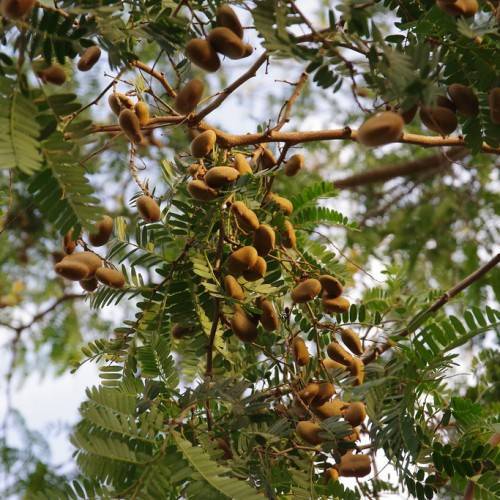
tamarind
Tamarindus indica
Cycle:
Perennial
Watering:
Average
Hardiness Zone:
10 - 11
Flowers:
Flowers
Sun:
full sun
Fruits:
Fruits Ready In
Edible:
Yes
Leaf:
Yes
Growth Rate:
Low
Maintenance:
Low
Drought Tolerant:
Yes
Salt Tolerant:
Yes
Thorny:
Yes
Tropical:
Yes
Care Level:
Medium
watering
Tamarind (Tamarindus indica) prefers well-drained soil and does best when watered regularly. It should be watered deeply but infrequently—aim for every 10–14 days—to ensure its roots are able to take in adequate moisture. During the summer months, it might be necessary to water more frequently if the soil begins to dry out. Be sure not to overwater Tamarind plants, as they can develop root rot from too much moisture.
sunlight
Tamarind (Tamarindus indica) is a tropical, evergreen tree species native to Africa and India. Tamarind will tolerate partial shade, although it may produce a less flavorful, lower yielding crop if grown in partially shaded parts of the garden. For optimal production, it’s best to plant tamarind in an area with direct southern exposure or western exposure so that the tree will get between 6 - 10 hours of full sun each day.
pruning
Tamarind trees should typically be pruned twice a year, once in early spring and once in late summer. When pruning, the most important areas to focus on are dead or diseased branches, suckers, and branches growing into each other. These should be removed to open up the canopy and allow for more light and air circulation. Additionally, thinning out the interior branches can reduce the overall size of the tree, allowing for more light and preventing it from becoming too heavy. Generally, no more than 1-third of the total growth of a tamarind tree should ever be removed in a single pruning session.
